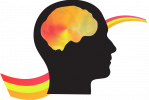According to the Centers for Disease Control and Prevention, in 2016 20.4% of US adults had chronic pain. In fact the CDC cited chronic pain as one of the most common reasons adults seek medical care. (Dahlhamer et al, 2018)
Chronic pain is any pain lasting more than six months, whether it’s mild or acute, continuous or episodic, or somewhere in between. Chronic pain can occur after a disease or injury, or without a known reason. Efforts to find relief have fed the current Opioid crisis in the US and contributed to higher health care costs. For those experiencing chronic pain, it can impede activities of daily living such as going to work and interacting with family and lead to depression and anxiety.
Fibromyalgia, CPRS, and other Sources of Chronic Pain
Fibromyalgia & Chronic Fatigue Syndrome are a closely allied set of widespread pain syndromes – almost 70% of the patients will meet criteria for both diagnoses. They are proposed to be an example of a central pain syndrome and explained as a form of central sensitization. Patients may also struggle with mood disorders at the same time..
The cause of these conditions is unknown. Sometimes, a basic disorder of sleep can lead to eventual fatigue and then widespread musculoskeletal pain. In a minority of cases, the condition can be traced through a family – although the distinct genetic signature is unknown. One would diagnose Fibromyalgia if pain is predominant, and similarly diagnose Chronic Fatigue Syndrome if fatigue is the more intense symptom. Some researchers propose that Fibromyalgia is precipitated by physical or emotional trauma; and that Chronic Fatigue Syndrome is something like a post-infection immune disease.
Complex regional pain syndrome (CRPS) is a chronic pain condition that most often affects one limb (arm, leg, hand, or foot) usually after an injury or post-surgery. The key symptom is prolonged severe pain that may be constant and may be described as a “burning” or “pins and needles” sensation. The pain, which is usually significantly greater than the original event/injury, is believed to be caused by damage to, or malfunction of, the central nervous system (brain and spinal cord) and peripheral nervous system (nerve signaling from the brain and spinal cord to the rest of the body).
CRPS 1 patients have the involvement of the Sympathetic Nervous System, while CRPS 2 patients have involvement of a specific injured nerve. Both syndromes exhibit pain beyond the distribution of the original injury.
Pain can be “local” (i.e. a broken bone), “central” (phantom limb, the pain of depression, tinnitus), or “mixed” (local pain that “morphs” into CRPS).
Autoimmune diseases and other inflammatory illnesses are notorious for mixed pain syndromes. Mixed pain requires specialized diagnosis and treatment. No matter what the initial cause, central and mixed pain has a comorbidity with mood disorder.
Have You Been Told Your Pain Is “Treatment Resistant”?
To make matters worse, many patients seeking relief have you been told their pain is “treatment resistant,” and led to believe it is somehow their fault –because treatment didn’t work for them.
A Multi-Pronged Approach to Recovery from Chronic Pain.
At The Neuroscience Center, we have found treatment-resistant pain often is related to abnormal connections between different areas of the brain. We have found a way to intervene with targeted, minimally invasive, rapid and effective treatments. Here are three approaches that are providing relief:
Hyperbaric Oxygen Therapy (HBOT) for Chronic Pain
Last month we shared how HBOT works and how it is used for treating traumatic brain injuries and stroke (read that article here), by administering 100% oxygen to the brain at a higher atmospheric pressure than found at sea level. Studies also show that HBOT is effective for chronic pain related to Fibromyalgia, Complex Regional Pain Syndrome (CRPS) and pain in general. Published studies indicate that HBOT induces an analgesic effect on nociceptive (e.g. cuts, broken bones, burns, etc.), inflammatory, and neuropathic (involving trauma to the nerves) pain. (Sutherland et al)
Perispinal Etanercept
Neuroinflammation is another source of chronic pain. Neuroinflammation is inflammation of a nerve or of parts of the nervous system. One approach we use at The Neuroscience Center to help our patients find lasting relief is perispinal etanercept (PSE) injections.
Tumor Necrosis Factor (TNF) is a naturally occurring protein in our bodies, needed to maintain a healthy brain. But too much TNF can cause inflammatory diseases, such as rheumatoid arthritis. The drug etanercept is FDA approved to be injected into the fat layer just under the skin. This neutralizes the excessive amounts of TNF in our bodies and thereby reduces inflammation.
For neuroinflammation—you need a method of injection that can get the etanercept to where it’s needed. The molecule size of etanercept is too large to cross the blood-brain barrier into the brain. Therefore it needs a different route.
That’s where Perispinal Etanercept (PSE) is effective. PSE is an off-label use of etanercept via delivery of the medication by injecting it in the muscles at the back of the neck, and then lowering the head slightly below the body level for a few minutes. Studies show that PSE injections offer a way to deliver etanercept to the brain for relief from neuroinflammation and the chronic pain it causes. (Tobinick, 2018)
Combination Therapy with TMS and ketamine
Combination Therapy with Transcranial Magnetic Stimulation (TMS or rTMS) and ketamine is a novel patented therapy pioneered by Dr. Steve Best, Founder and Director of The Neuroscience Center in Deerfield, IL. Both TMS and infused ketamine are individually recognized treatments for patients suffering from depression.
The Neuroscience Center is helping patients achieve sustained relief with a research-informed combination of the two that also treats chronic pain. The combined approach yields the rapid onset of relief commonly experienced with ketamine infusions, with the longer-term benefits observed with TMS treatments. Read more about how TMS, ketamine work individually and the enhanced results with the combination therapy of the two here.
No “One Size Fits All” at The Neuroscience Center
The Neuroscience Center offers a combination of treatments to meet the individual, complicated needs of our clients. The good news is, there is help for “treatment resistant” chronic pain. Contact us for an initial consultation to see how we can get you on a path to relief.







